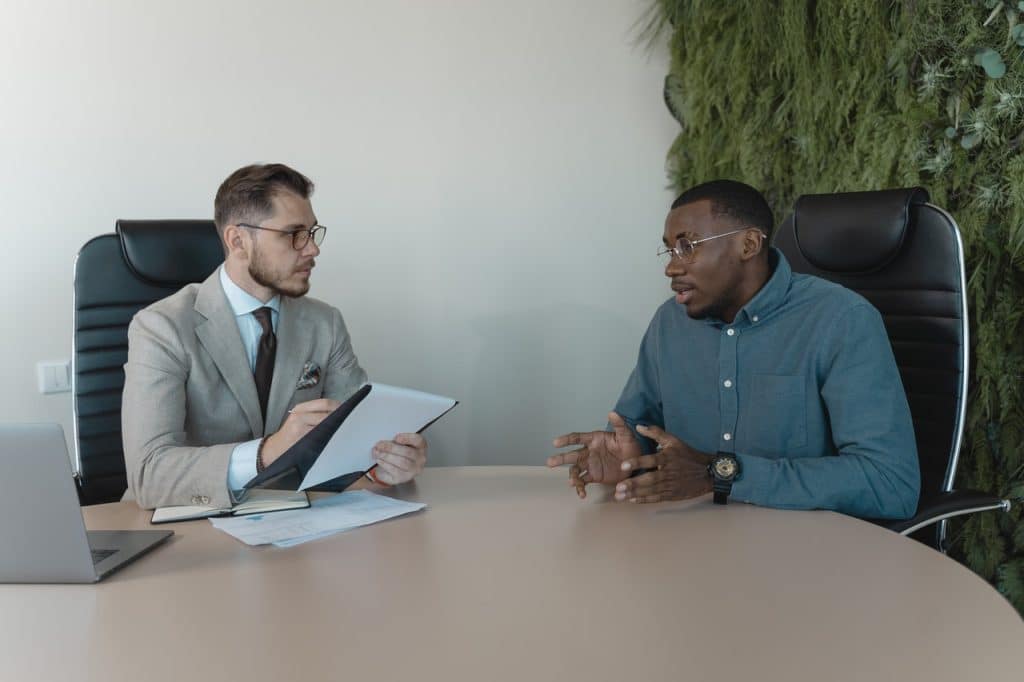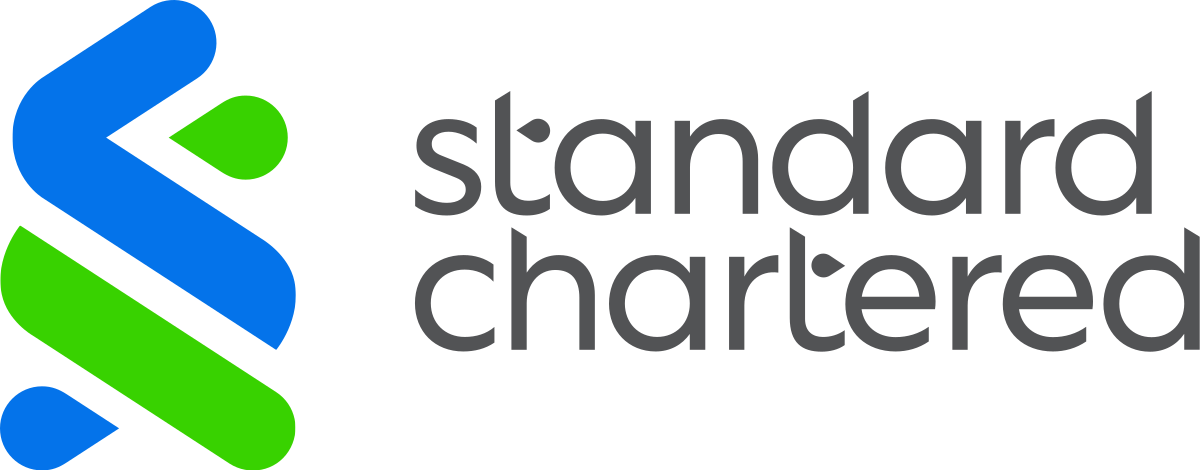If you’re reading this, it’s because you received an invitation for a job interview or you’re a step closer. Congrats! From now on, you need to prepare for it, as it’s a decisive stage to achieve your goal.
Part of this preparation includes learning and practicing your nonverbal communication skills to improve your performance. Here’s when body language becomes a powerful tool. This is the reason why I’ll explain to you ten effective body language tips for a job interview.
Table of Contents
- What is body language?
- What is the role of body language in job interviews?
- Top 10 Body Language Tips for a Job Interview:
- Make a powerful first impression
- Balance your eye contact
- Share a genuine smile
- Nod occasionally to show agreement
- Talk with your hands in a gentle manner
- Avoid restless habits
- Face your interviewer
- Mirror your interviewer
- Be aware of your posture
- Make a good exit
- Bonus Tips
What Is Body Language?
Body language is any physical behavior, expression, and mannerism that you use to express a non-verbal message or “silent message”.
Studies have shown that over 60% of your communication skills in the form of tone and body language influence your interviewers the most. Thus, all your nonverbal behaviors can help you build trust or can undermine what you try to convey.
Types of nonverbal communication
- Facial expressions (eye contact, smile, mouth gestures);
- Posture (sitting, walking, standing, head position);
- Gestures (ticks, hands and leg movements);
- Touch (handshaking, hug);
- Physical space;
- Voice (tone, inflection, filler words).
All these body language signals happen at the conscious and unconscious levels. So, even when you try to hide the true contents of your thoughts, your body language often betrays you. They don’t stop when you stop speaking, because even when you’re silent, you’re still communicating.
What Is The Role of Body Language in Job Interviews?
According to Edward Wertheim, who wrote the article titled “The Importance of Effective Communication”, the nonverbal cues play five roles – repetition, contradiction, substitution, complementing, and accenting – to attribute meaning to what you said.
Your body language also projects your emotions to the interviewer. Neutral or positive body language allows the interviewers to focus on what you are saying rather than how you look. Likewise, when your nonverbal signals match up with your speech, they increase rapport, trust, and clarity.
Nowadays, employers look beyond the paper qualifications of the candidates. They look for those whose attitude fits well the position and organizational culture. This is that candidates should also have that extra edge – the “nonfunctional requirements” of the job.
An interview functions not only as a way of determining who is most capable of performing the job well but also as a way of getting a deep insight into the applicants’ personality. Gordon Wainwright, an expert in human resources development.
Gordon Wainwright, expert in human resources development.
Now, body language is important in both face-to-face interviews and video interviews. Although your nonverbal communication is difficult to see as in person, the cues visible will be scrutinized more closely. Therefore, if you want to succeed and express what you mean, pay attention to the following body language tips for a job interview.
Top 10 Body Language Tips for a Job Interview
1. Make a Powerful First Impression
The British author Michael Farr states that employers rarely hire someone who makes a negative first or later impression. A person has about 10 seconds to make a good impression and there is no second chance.
In consequence, be on alert for a first impression opportunity. You must be in “interview mode” before you start the interview, as well as be on your best behavior from the first person you come in contact with.
The right greeting is part of making a strong impression. So, greet the interviewers with a friendly smile, maintaining eye contact. Also, ensure you have a clear understanding of the employers’ business etiquette. Finally, remember that the magic of a first impression must be sustained throughout the interview.

2. Balance Your Eye Contact
One of the key body language tips for a job interview is eye contact. It suggests your engagement with the situation. This will help you concentrate on what is being said.
Saying this, try to hold your gaze for up to three seconds, and make it as you listen attentively and respond to questions. Moreover, keep in mind that in Asian cultures, eye contact occurs less frequently and for shorter durations than in the West.
In an online interview, put the videoconferencing window right by the camera so you can look straight into it to simulate eye contact, and try not to look away at other things on your screen.
3. Share a Genuine Smile
The expressiveness of the face is highly important. Studies show that smiling lively and expressive facial expressions evoke positive responses from others and show you’re comfortable with the conversation.
Although it’s a formal conversation, avoid being too serious. You’re interviewing for a job because you want it, express your enthusiasm for it! In general, maintain a fairly balanced smile, neither too timid nor too exaggerating.
4. Nod Occasionally to Show Agreement
Nodding is an excellent way to show interest and agreement. Giving a nod is a signal of acceptance and you’re listening. Of course, do it when it’s appropriate, if not, you’ll eradicate all the positive body signals shown previously.
5. Talk with Your Hands in a Gentle Manner
Part of the body language tips for a job interview is to talk with your hands to help listeners visualize what you’re saying. Also, making gentle hand gestures as you speak can help you bring your nerves under control. Still, too many hand movements at the beginning aren’t good. The proper way is to add them gradually throughout the conversation.
Furthermore, if you sit at a table or desk for the interview, keep your hands open and visible. If you have nothing in front of you, keep them in your lap or on the armrest of the chair.
Open palms are a sign of peaceful intentions. This is also a signal to the interviewers that their words are being experienced as respectful, and valuable (…). The more frequently you stretch out your hands, the greater the openness and honesty you will communicate. This gesture can be strengthened by spreading the fingers or bending them upward so that the hand forms a kind of cup.
Kasia Wezowski & Patryk Wezowski
On the other hand, in a video interview, you should also use your hands, just make sure you are far enough from the camera.

6. Avoid Restless Habits
You must try to eliminate any distracting mannerisms like,
- Nail-biting;
- Fist clenching;
- Jiggling your leg;
- Tapping your fingers;
- Fidgeting with objects;
- Knuckle cracking;
- Shuffling your feet.
Restless habits are distracting and demonstrate anxiety or disinterest to the interviewer. However, you can avoid these body language mistakes. For example, don’t hold any object during the interview, and if you don’t know what to do with your hands, try pressing the fingertips together to form a pyramid or hold them in a curved position.
Likewise, resist the urge to cross your legs by placing both feet firmly on the floor. Another piece of advice is to breathe calmly to reduce the desire to perform nervous actions like jiggling your leg or drumming on your arm.
7. Face your Interviewer
During a job interview, either in person or virtually, make sure your body, legs, and feet are facing the interviewer. This will make the person feel that you’re both aligned.
When the interviewer says something, it’s prudent to lean forward a little, but don’t invade the interviewer’s space. Keep in mind the golden rule that personal space extends about 20 inches.
8. Mirror your Interviewer
Mirroring is to display similar body language to other participants during a conversation. This is one of the key body language tips for a job interview as it’s a highly rapport-building cue that indicates the desire to connect with people. Even so, the mirroring of body language makes the other person feel accepted, which is a good first step toward mutual understanding.
When a person mirrors or exhibits similar speech patterns, breathing rates, or body positions with a second person, the first person becomes aligned or in sync with the second person. The result is that the second person often perceives that he/she has something in common with the first person and begins to form a bond.
Alan Nierenberg, author of the book “Winning the interview game”.
You can do this by matching with the interviewer’s positive body language, words, tone, etc. If the person uses hands or subtly shifts posture to make a point or to clarify something, you can do the same thing. Yet, make sure you don’t mimic or copy your interviewer too closely.
9. Be Aware of Your Posture
Always adopt an open posture and make sure you’re sitting up straight, your shoulders back and down, and your chin up. A straight back lets others see that you’re giving yourself the necessary space and air. Practice this posture regularly to get used to it.
Besides, don’t slouch in your chair, because it might be perceived as a lack of interest. In a face-to-face interview, if they give you a choice of seats, choose a seat that will allow you to maintain excellent posture and be comfortable.
Similarly, watch your posture when standing. Maintain your shoulders back, chin lifted, and stand with your feet slightly apart. Walk smoothly and confidently and firmly hold on to your belongings to avoid dropping anything.
In the case of an online interview, you don’t have to worry about where to sit. However, a twisted upper body can have negative effects on the power of your voice. So that the same rules apply as in a traditional one.

10. Make a Good Exit
Your exit must be strong, regardless of how you felt during the interview. As in the beginning, maintain eye contact, a genuine smile, and don’t forget to thank the interviewer(s).
In a face-to-face interview, walk out of the building with an upright posture until you are out of sight. If the interviewer(s) walks you to the exit or lobby, be sure to maintain the same energy and interest.
Bonus Tips
- Be particular about your dress and appearance.
- Believe in what you’re saying, so your facial expressions and body movements will come naturally.
- Know where the boundary lies between self-confidence and arrogance.
- In Wainwright’s words, you can also make an impact with these five factors: rapport, empathy, synergy, self-disclosure, and charisma.
- Practice, practice, and practice. Most of the body language tips for a job interview you have learned so far require training.
To sum up, consistent body language provides an opportunity to convince the interviewer of your worth as a candidate. It’s normal to be nervous, only don’t let them control you. As I mentioned, our movements and postures are usually subconscious, but with these effective tips, you can work on them to project confidence.
Sources
Farr, J. M. (2005). Next-day Job Interview: Prepare Tonight and Get the Job Tomorrow. Jist Works.
Kinoshi, T., & Akintunde, S. O. (2013). Leveraging ICT to Enhance Job Interview Opportunities through Body Language. Arabian Journal of Business and Management Review (Nigerian Chapter) Vol, 1(9).
Nierenberg, A. H. (2005). Winning the Interview Game: Everything You Need to Know to Land the Job. AMACOM/American Management Association.
Peterson, R. T. (2005). An examination of the relative effectiveness of training in nonverbal communication: Personal selling implications. Journal of Marketing Education, 27(2), 143-150.
Wainwright, G. (2010). Understand Body Language: Teach Yourself. Teach Yourself.
Wezowski, K., & Wezowski, P. (2018). Without Saying a Word: Master the Science of Body Language and Maximize Your Success. AMACOM.



























